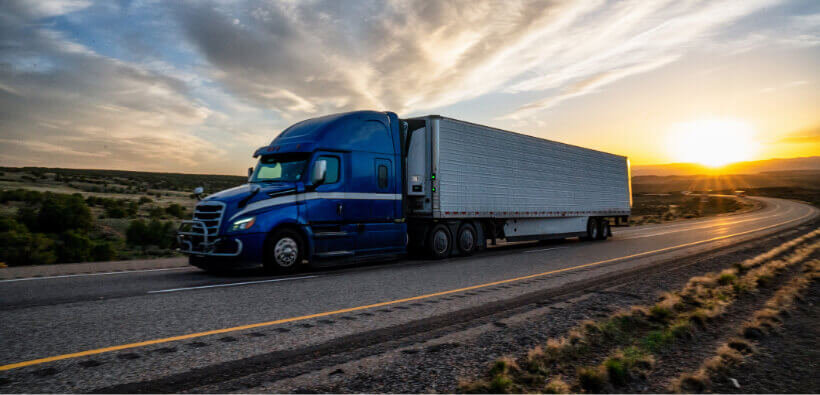Safety Tips For Sharing the Road with Big Rigs

Whether you call them big rigs or 18-wheelers, they’re part of our everyday travels and sharing the road with them can be hazardous. That’s why it’s always wise to follow a few common-sense tips to keep you and your passengers safe when driving along the nation’s highways with these over-sized trucks.
It goes without saying, the last thing you want to do is tangle with an 18-wheeler. Even more so, when you take into account the average car weighs a mere 4,000 pounds compared to the hefty 80,000-pound legal weight of an 18-wheeler. You don’t have to be a math genius to know those aren’t fair odds and the loser won’t be the 40-ton truck you just ran into or vice versa.
Such an encounter can be quite unforgiving for the occupants of a 2-ton vehicle. Not only can the damage to your car be extensive, but your injuries could be critical and even life-threatening. While not all accidents with big rigs are avoidable, following some of the tips below can greatly reduce the chances of being involved in one.
Avoid or keep distractions to a minimum
This applies anytime you get behind the wheel, but when traveling roads with a high number of big rigs it becomes even more important. Don’t text or use your cellphone while driving. Big rigs can weave into your lane or cut you off when you least expect it.
Never keep pace or drive side-by-side
Don’t drive side-by-side with an 18-wheeler or keep pace with them. Like most cars, large trucks have an equally large blind spot. They may not see you in their mirrors and can accidentally hit you when changing lanes or turning.
Stay Focused
In other words, keep your eyes open when passing or following a big rig. If the truck’s turn signal comes on, give the driver room by dropping back. Under no circumstance should you attempt to pass an 18-wheeler on a tight curve or while it’s performing a turn. High-profile 40-ton vehicles have a tendency to topple over and crush anything in their wake.
Never Tailgate
Because big rig drivers sit much higher than the normal passenger vehicle, they typically will see things before you do. Tailgating an 18-wheeler can prove exceedingly dangerous since they may brake suddenly to avoid an object in the road or a car stopping ahead. By staying back at least 100 feet or more you’ll have the time to react without getting involved in a rear-end collision. Furthermore, you stand a lower chance of being struck by debris from a blown tire, possibly sparing your windshield and a comprehensive insurance claim in the process.
Use Extra Caution in Bad Weather
The risk of sharing the road with big rigs increases dramatically in bad weather, such as rain, snow, and fog. Driving in poor conditions isn’t only a challenge for you. In fact, it becomes a great deal more difficult and dangerous for 18-wheelers. Make sure you always give them additional room, don’t cut them off, and signal when changing lanes.
Consider the Terrain
Knowing your surroundings in any driving situation can help you avoid potential accidents. Downgrades can be especially critical. Should you notice a big rig in your rearview mirror closing in on you at a high rate of speed, move out of his way. DO NOT stay alongside for any length of time. If the driver is having brake or steering problems, you want to get as far away as possible.
As with any advice, it’s not 100 percent foolproof, but by using extra caution behind the wheel, you can often reduce your chances of having an encounter with a big rig.
An accident with an 18-wheeler can total your car, put you in the hospital and do a number on your car insurance. Being sure you’ve got the coverage you need and the best auto insurance rates possible can help give you peace of mind. So, why not get a free auto insurance quote today?


